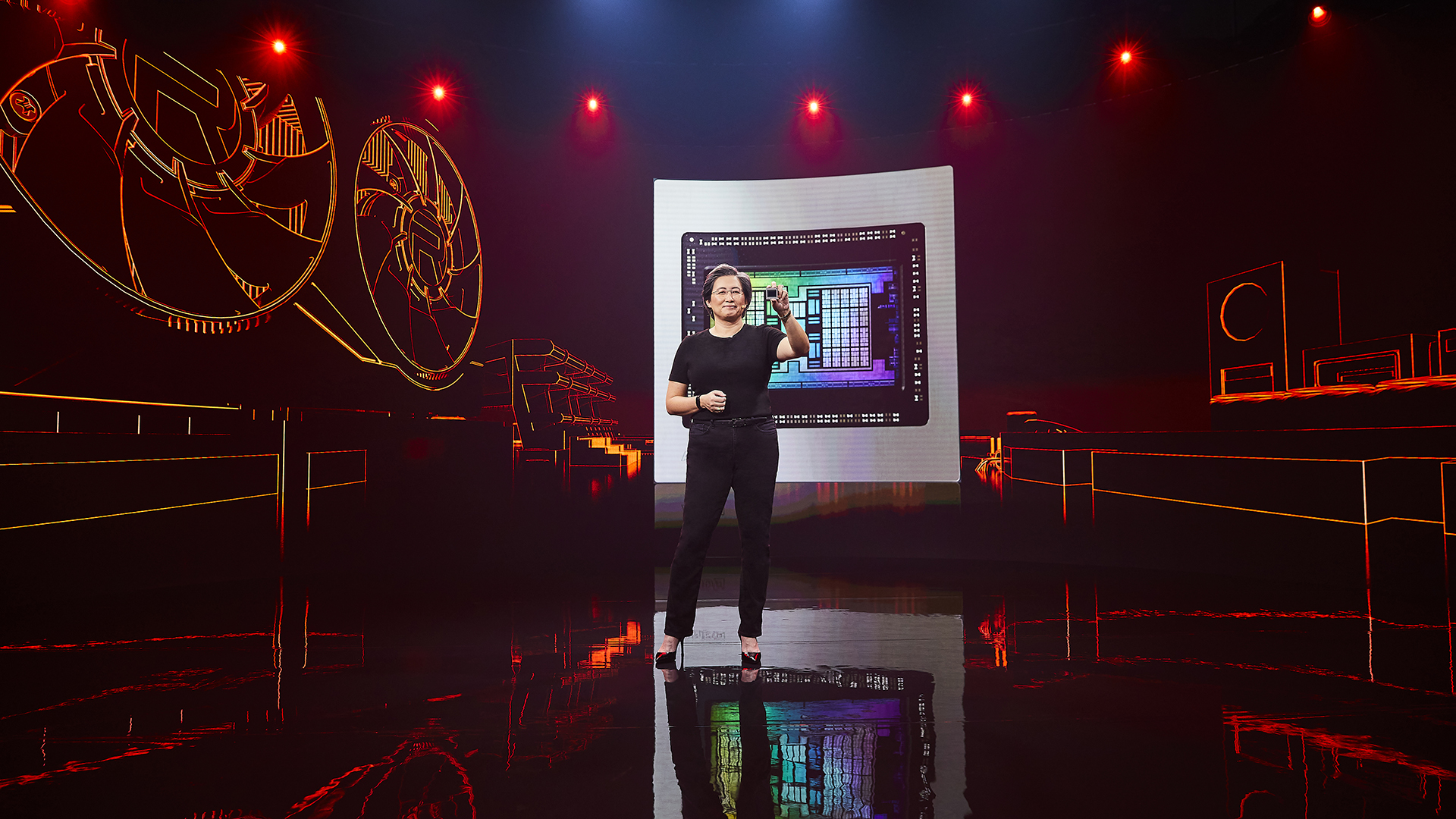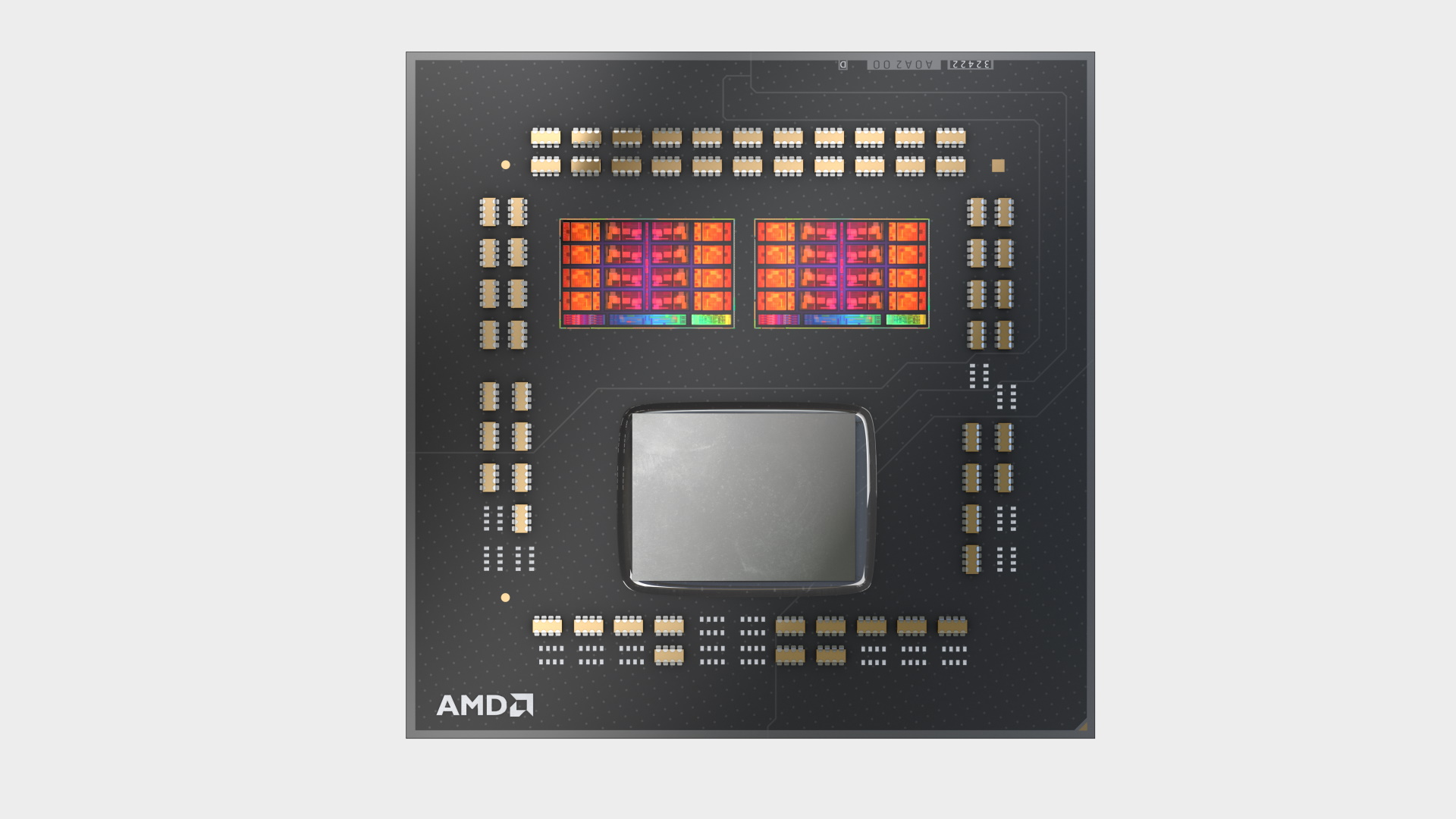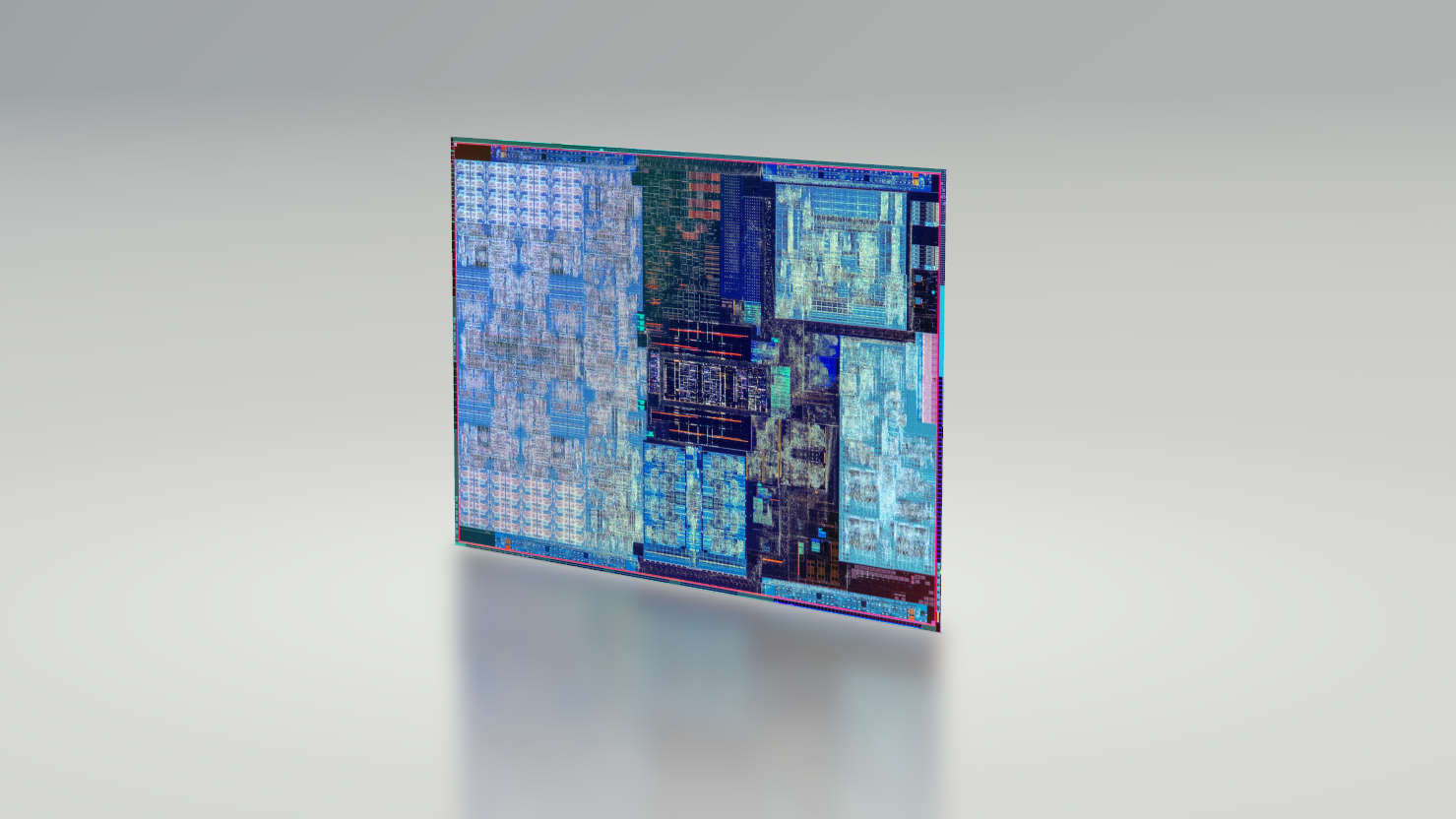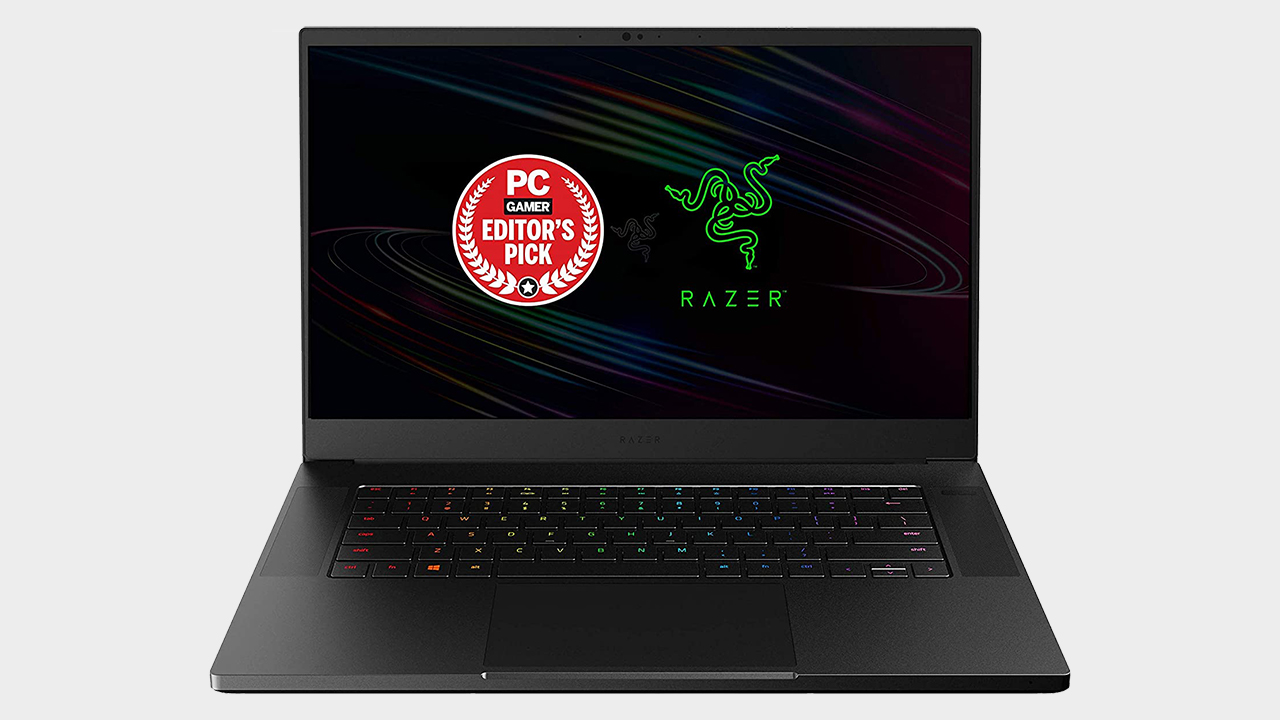This is the most exciting PC gaming gear 2021 has to offer
2021 is here and this is the tech we can't wait to get our hands on.

We made it through the wilderness, somehow we made it through. We didn't know how lost we were until we found you, 2021. We were beat, incomplete. We'd been had, we were sad and blue... but now 2020 is over let's consign it to history, thank it for all the incredible PC gaming tech it brought us, and look forward to a better year, one filled with even more great PC hardware.
Whatever you want to say about 2020, but it did bring us the greatest gaming GPUs we've ever had, and from either sides of the graphics card divide. Both AMD and Nvidia were firing on all cylinders, and AMD in particular on the CPU side managed to finally overtake the previous incumbent of top gaming processor, Intel.
It's easy to forget what an incredible achievement that is for the red team, especially when the entire company looked on the brink of collapse but a scant few years back.
But what's next, and how can 2021 really top such a tech overload from the last 12 months?
Such is the way of technology that nothing really stands still and innovation and development just keep on marching along. Not to mention the fact that increased competition at all levels of the market—from CPUs and GPUs, to SSDs, memory and peripherals—means that every key player is hustling in order to hit the top.
Which means there's a lot to be excited about for the coming year, so we've canvassed the hardware team to see which of the top tech of '21 they're most looking forward to getting their hands on. And this is the pick of the bunch...
Affordable GPUs

Mainstream AMD and Nvidia graphics cards
I'm looking out for the two proven architectures in Nvidia's Ampere and AMD's RDNA 2 to make their way into cheaper graphics cards in 2021, and ideally in more plentiful numbers than last year. We've seen some movement that predicates new cards in the first few months of the year, but my gut tells me it won't be until the end of March that things really start to get moving in the mid-range, and perhaps even later for entry-level cards.
Keep up to date with the most important stories and the best deals, as picked by the PC Gamer team.
We witnessed many a new graphics cards launch over the final few months of 2020. From the Nvidia RTX 3080 to the AMD RX 6800, we're practically swimming in 4K ready GPUs. But it's been a little disheartening to watch that great tech disappear from retail in the blink of an eye, and what about those of us that don't fancy dropping our entire gaming PC budget on a single component? The hardware I'm most looking forward to in 2021 will perhaps soothe both complaints.
When it comes to recommending a GPU this holiday season, I have often leaned towards the Nvidia RTX 3060 Ti, a $399 graphics card that's able to offer a great blend of performance with the added benefit of ray tracing and DLSS thrown in. It is a great card in my eyes, too, but that's not why I recommend it. I tell people to scour the web for any available RTX 3060 Ti stock because it's simply the cheapest card of the latest Ampere generation going.
Recommending that $399 graphics card, or otherwise go without for a few months, just feels pretty elitist, honestly. But I don't think it's a good time to buy just any old graphics card (even if you could find one). Both Nvidia's RTX 30-series and AMD's RX 6000-series graphics cards offer a big leap in performance over previous generations, and we're so close to the mainstream next-gen cards you can almost hear the faint rustle of an anti-static bag on the wind.
We don't yet have a firm idea of what Nvidia and AMD are cooking up for the mid-range GPUs in the lineup, but you can assume at least another RTX 30-series card beneath the RTX 3060 Ti—a few more cheaper options beyond that wouldn't go amiss, either—and some analogue in AMD's RX 6700-series.
The dream is a unified Ampere lineup with RTX capability throughout the stack, however, including the entry-level. A hearty RTX graphics card able to offer DLSS would do a lot for overall gaming PC performance on a budget, and while we've nothing official to go on just yet, that's not entirely a pipedream, either. Multiple rumours have so far set up potential RTX 3050 and RTX 3050 Ti graphics cards, so we're hoping these plans see the lithographic light of day.
As for AMD, well, the company has before been keen to maintain RDNA options down to the entry-level, such as the RX 5500 4GB, and I'm holding out for an RDNA 2 upgrade in good time. An RX 6500 or RX 6600 with a decent memory buffer sounds appealing enough with only a guess as to the final spec, although how AMD might scale down the Navi 21 GPU for use in cheaper cards could make for interesting reading in the new year.
Jacob Ridley
Budget AMD CPUs

Budget AMD Zen 3 Processors
It's fair to say we've been impressed with the initial salvo of Ryzen 5000-series processors, but we're even more excited about the new AMD Zen 3 architecture trickling down into more affordable chips. Looking back over the last 12 months, one chip that really stood out for budget gaming was the Ryzen 3 3300X. The 4-core, 8-thread processor managed some impressive performance figures, shipped with its own Wraith Stealth cooler, and cost a mere $120.
Now, imagine that little slither of tech joy utilizing the Zen 3 architecture.
Swoon. I could even handle a slight jump in pricing for that budget powerhouse, up to $150 say, although much more than that and you're going to be bumping to the lower orders of Intel's lineup. I mean, in an ideal world, we'd have something that was closer to the $100 mark, although I'm trying to be vaguely realistic here.
We wouldn't mind seeing something that was a slightly cheaper version of the AMD Ryzen 7 5800X either. The 5800X is a great chip but at $450 it's simply too expensive. Knock a few MHz off the base and boost clocks and bring it in closer to $350 and we'd be much more tempted to throw our all on the 8-core, 16-thread bandwagon. And if AMD is looking for names, then the Ryzen 7 5700X has a certain ring to it. And while we're at it, non-X version of its chips wouldn't be bad either, providing the price was right.
Another area where AMD could shine is with its APUs. For serious high-end gaming, these aren't too exciting, but for more mainstream pootling and for retro gaming, a processor with integrated graphics makes for a decent option. We're stuck with AMD's Vega graphics in 2021 (codename Cezanne), with RDNA-based APUs not scheduled until 2022 (Rembrandt), but even Vega paired with a Zen 3 core or four will be awesome.
Alan Dexter
Intel Alder Lake

Intel's Alder Lake CPU gamble
This one is still a long way off, but Intel has promised us two new desktop processor generations in 2021—first will come Rocket Lake, likely in January, and then at the end of the year we'll see Intel Alder Lake. Unlike Jacob and Alan I'm going to lean a little into the elitist angle and speak about high-end processors, not the affordable end of the market. Though, to be fair, that's where my favourite hardware has historically resided. With you in spirit, guys.
So, why is it that I'm more excited about the latter architecture than the former? After all, Rocket Lake is the next big Intel processor release. Rocket Lake, however, is still just a 14nm stop-gap measure; a jury rigged CPU architecture born from Intel's storied 10nm production failures and exists for no other reason than because it can't get the latest node out in great enough volume to fill both the desktop and notebook markets.
Alder Lake is something different. Potentially something very different. It will be the first Intel 10nm desktop CPU, but it also feels like the first Intel architecture designed and built in a world where AMD's Zen architecture exists and is gobbling up both consumer and server market share previously sworn to Intel. It's a necessary reaction to the CPU core-count expansion that has accompanied AMD's resurgence and sees Intel not using the same chiplet design and instead opting for the big.LITTLE approach pioneered by Arm.
This will see high-end Intel CPU cores paired with its low-end cores. That should, on the one hand, offer high frequencies and serious single-threaded gaming performance from the big Golden Cove cores, and on the other, expanded multithreading potential offered by the same number of little Gracemont cores working in unison.
The expectation is that the top Alder Lake chip will appear with eight Golden Cove cores, and eight Gracemont cores, to effectively deliver a 16-core CPU. Intel is seemingly confident that its updated Gracemont Atom cores will be powerful enough to deliver in multithreaded productivity workloads, where core-count is king, and the Golden Cove cores will be able to make their presence known when it comes to apps that need serious clock speed and single-threaded grunt.
We don't know if there's going to be much in the way of HyperThreading within Alder Lake yet, and if there is it might be restricted to the big cores, leaving a bit of an asymmetrical 16-core, 24-thread chip in our machines.

This won't be the first big.LITTLE design of Intel's; the Lakefield chips of last year offered mobile CPUs for superlight laptops with one big core and five little Atom cores. And they were… fine. As a proof of concept Lakefield worked for its given aims, but whether that can be scaled up to a full desktop chip is still an unknown quantity.
There is a lot of scepticism in the industry about the utility of using a big.LITTLE design for a desktop chip—it's usually something kept back for mobile CPUs where energy efficiency is vital—but Intel seems confident.
It always does ahead of time. But for me it's all going to come down to how effective the hardware scheduler is, and Intel is working with Microsoft to ensure it's as invisible to Windows apps as possible. That's a lofty goal, but also absolutely vital for Alder Lake to work. Whatever happens it will be one of the most exciting tech events of 2021, whether a huge success or an unmitigated failure.
It's also worth remembering the last time AMD was eating up Intel market share, with its Athlon64 chips, Intel was lumbering along with a hot and heavy Pentium 4 Netburst architecture. A swift rethink had Intel repurposing its impressive Pentium M mobile chips and scaling them up for desktop to form the basis of the Core architecture which dominated for so long.
There is a certain symmetry here—Intel scaling a mobile design to desktop, in the face of an AMD onslaught—which makes me feel like there's a chance Alder Lake could be great. It's almost fate.
Dave James
VR and AR

Virtual and augmented reality
I'm not waiting for any specific piece of tech, instead I eagerly await the next generation of VR and AR to hit the mainstream market. Bolstered by a sheer will to forget about the pains presented by the real world in 2020, it's no wonder the Virtual reality market is booming, growing more widely adopted and better at simulating reality with every waking step. Augmented reality and Mixed reality are similarly growing in popularity, slowly blurring the lines between our world and the digital one.
This year we've had the Oculus Quest 2 roll out—now with higher refresh rates than ever before, as well as announcements for spooky AR games like The Witcher: Monster Slayer. But it certainly won't end there. With 2021 looking all the more impressive for these markets, we're going to be seeing some big improvements to the state of AR and VR technology alike.
With video conferencing becoming more of a staple in this, our increasingly digital world, it's likely we'll turn to virtual reality to add more of a human touch to the experience. Actual human contact is difficult to come by at this moment in time for a lot of people, so I hope VR and AR step in to fill that gap.
It has been predicted that XR (the weird conflation of VR and AR) sales could rise six fold up to 2025, so the future is potentially bright. Whether that's going to be the same for VR gaming is still uncertain. The big boys want in on that and Facebook is either going to go it alone, and not use its Oculus brand, to launch its first set of AR glasses in 2021. A set of AR glasses in collaboration with Ray-Ban. Huh. Though I'm still not entirely sure if that is exciting or terrifying. Probably the latter.
As long as we manage to collectively steer clear of creepy virtual reality things like this, which promise to rebuild your connection with 'deceased loved ones,' I'll be happy.
Katie Wickens
RTX 30-series powered gaming laptops

Next-gen RTX and Radeon-powered gaming laptops
Gaming laptops have been in this weird holding pattern over the last few months ever since the release of Nvidia and AMD's latest GPUs hit the market. I've been telling a lot of folks looking to buy a gaming laptop to wait for 2021 when the new generation of GPUs are shrunk finally shrunk down to fit gaming laptops. It's a crappy feeling to drop a large stack of cash on a high-end gaming laptop only to have it rendered obsolete in a matter of months, though you may have some good deals in the meantime in anticipation of next year's models coming out.
We have our fingers crossed that we will get the first look at RTX 30-series powered laptops at CES at the start of the year and then getting our hands-on retail samples shortly after that. However, we wouldn't be surprised with all the delays happening if those got pushed back later in the year.
With 1080p displays hitting as high 300Hz on current gaming laptops, these new cards can take full advantage of whatever sort of fancy screen you choose without it being a bottle for graphical performance.
Just thinking about a Max-Q version of an RTX 3080 inside a laptop with a 4K OLED display has me giddy with excitement. It'll be expensive as hell, but I'm looking forward to seeing gaming performance that rivals high-end PCs on something that takes up a fraction of the space.
While not as powerful as we hope, AMD's GPUs can provide some impressive budget config options for gamers who don't have over $3000 to drop on a gaming laptop. 2021 gaming laptops are going to have a little something for everyone.
Jorge Jimenez

Dave has been gaming since the days of Zaxxon and Lady Bug on the Colecovision, and code books for the Commodore Vic 20 (Death Race 2000!). He built his first gaming PC at the tender age of 16, and finally finished bug-fixing the Cyrix-based system around a year later. When he dropped it out of the window. He first started writing for Official PlayStation Magazine and Xbox World many decades ago, then moved onto PC Format full-time, then PC Gamer, TechRadar, and T3 among others. Now he's back, writing about the nightmarish graphics card market, CPUs with more cores than sense, gaming laptops hotter than the sun, and SSDs more capacious than a Cybertruck.

